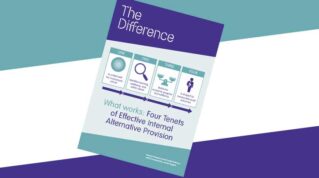The government’s commitment to invest £105 million in 15 new special free schools is an opportunity to increase national capacity for Special Educational Needs and Disability (SEND) provision sustainably.
More than 1.5 million young people have special educational needs, and the shortage of SEND placements and lack of funding has left hundreds of children without an education, health and care plan (EHCP) and struggling to secure appropriate support.
The development of new SEND facilities should go some way to easing this pressure, but project stakeholders will need to ensure new buildings meet the Department for Education’s (DfE) net zero targets and facilities output specification, without impacting quality of learning.
The right materials
However, investing in greener SEND facilities comes with challenges. Schools and stakeholders must balance the introduction of sustainable materials with comfort and accessibility for pupils.
For example, plasterboard is a recyclable product used as a lining board in many construction projects, but it’s less suitable for SEND facilities that require more robust materials, in compliance with the output specification.
Instead, timber and materials with a greater impact-resistance are better suited to creating the durable, supportive environment many pupils with SEND need. Timber is one of the most sustainable building materials as it can store large amounts of carbon, making it a go-to solution for dramatically reducing carbon in the built environment.
Schools providing SEND provision must also consider how a building’s thermal comfort affects learning, particularly when procuring greener facilities. Classrooms that are too hot or cold are often uncomfortable environments for children and staff to work in and can be distressing for pupils with sensory sensitivities.
While buildings constructed with lower-mass materials such as timber typically retain heat more effectively due to their thermal performance, solutions employing higher-mass materials such as concrete can incur greater heating costs.
Schools will therefore need to consider an approach that balances thermal comfort when using lightweight, timber-based building solutions. For example, this can be achieved by introducing a specific mass in the ceilings, such as an exposed concrete soffit via a pre-cast concrete plank.
A fabric-first approach
This hybrid construction between a kit-of-parts solution and the use of concrete and steel allows heat to be absorbed in the ceiling while maintaining internal thermal comfort and ensuring the building’s embodied carbon remains low.
This fabric-first approach to design and construction is key for improving sustainability. For instance, buildings with a strong fabric performance will better support the inclusion of air source heat pumps as air permeability is critical to their function.
Equally, while many schools are installing photovoltaic (PV) panels to generate their own clean energy and lower utility costs, the lifespan of PVs is shorter than most school buildings. Schools will face costs to replace PV panels several times over and be challenged with disposing of them sustainably.
Investing in buildings with a high fabric performance is therefore a longer-term solution to achieving energy efficiency and reducing contributions to climate change.
Considerate construction
Increasingly, the education sector is turning to modern methods of construction (MMC) to grow estates sustainably. Industrialised construction or off-site manufacturing tick many boxes for schools offering SEND provision. Factory-made components are delivered at speed with limited disruption to site activities.
For pupils with SEND, the noise pollution of a live construction site can take its toll, not to mention other hazards such as the silica dust generated from cutting materials containing sand.
Producing building parts in a factory not only overcomes these challenges but simultaneously reduces waste and provides greater precision in the final product. This is key when finetuning acoustic performance.
As stipulated in the Building Bulletin 93, pupils with hearing impairment, autism and other special needs can be very sensitive to the acoustic environment, particularly when noises have strong tonal, impulsive or intermittent characteristics.
Manufacturing buildings in a controlled environment will ensure the desired acoustics are achieved to a high standard while reducing the presence of on-site noise pollution during construction.
As schools offering SEND provision juggle a growing demand for placements and pressure to fulfil environmental, social and governance commitments, this latest injection of government funding opens a window for greener facilities to be procured.
With several sustainable options on the table, collaboration between schools and suppliers is necessary to ensure pupils’ needs continue to be met.












Your thoughts